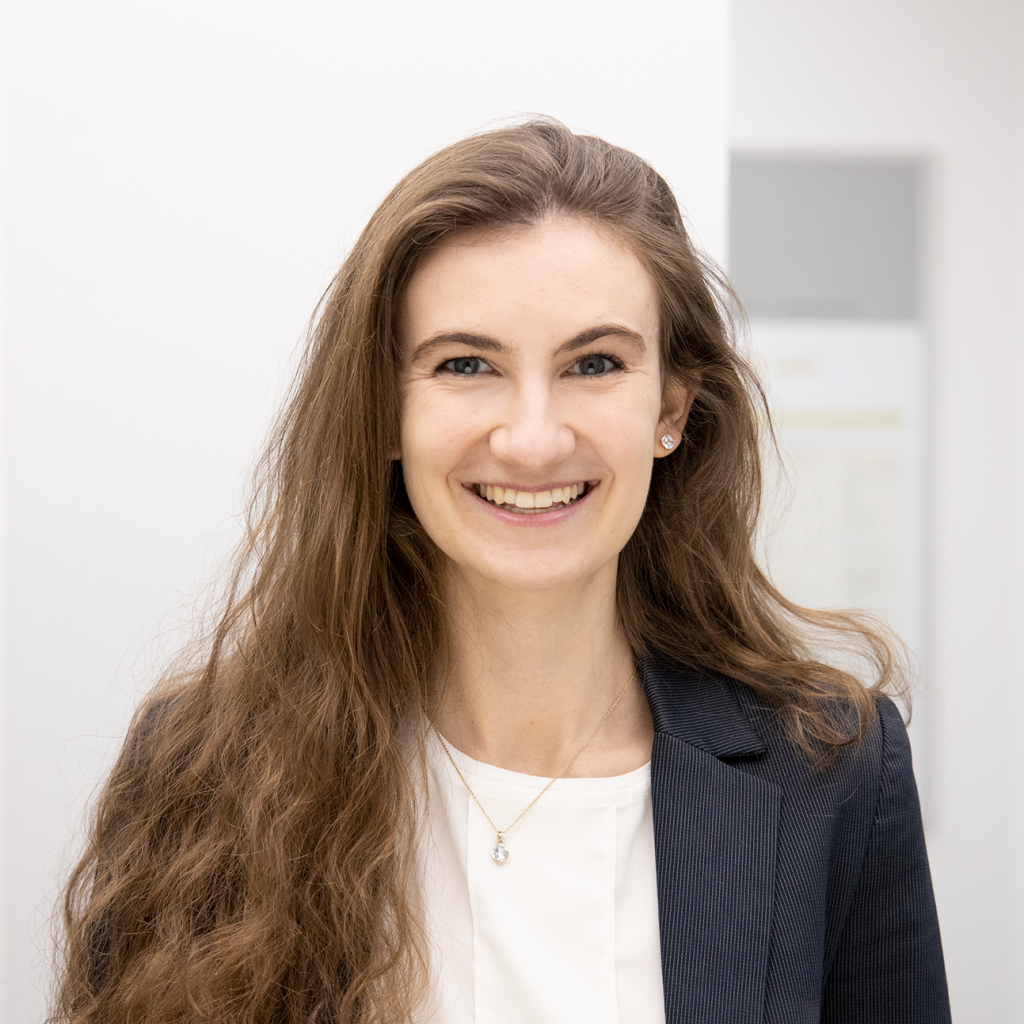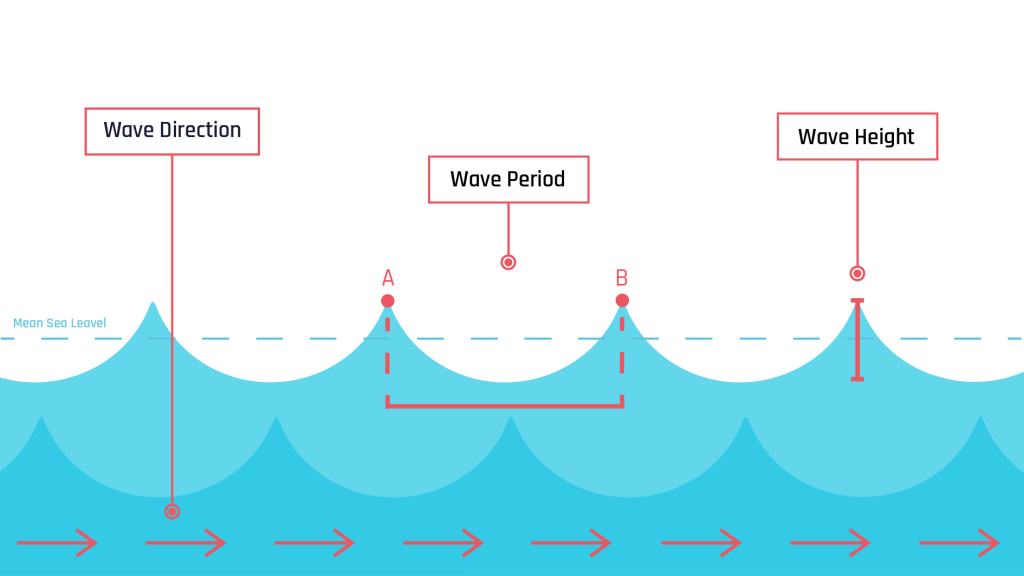
Developing machine learning (ML)-based Earth system model components is central to the AI activities implemented by ECMWF and their partners within the Destination Earth (DestinE) initiative of the European Commission. This blog series shares insights from experts building these components, highlighting their approaches and contributions towards a coupled ML-based Earth system model.
Learning Ocean Wave Dynamics

By Sara Hahner, Scientist for Machine Learning, ECMWF
Together with Jean Bidlot, Josh Kousal, Lorenzo Zampieri, Christian Lessig, and Matthew Chantry.
Ocean surface waves, generated primarily by the action of wind on the sea, are a dynamic and integral component of the Earth system. Beyond their visible motion, they shape the exchange of heat and moisture between the ocean and atmosphere, exerting a significant influence on near-surface wind patterns. Skilful predictions are crucial to mitigate hazardous marine conditions. Because of these interactions—and their importance for navigating and forecasting marine conditions—accurate wave modelling has become an essential pillar of Numerical Weather Prediction.
In this context, for DestinE, we are developing a new AI-based wave model at ECMWF to emulate ocean wave dynamics. Trained on more than 40 years of output from ECMWF’s state-of-the-art physical wave model, it learns how ocean waves form, grow, and travel across the oceans. The model produces reliable wave predictions while being more computationally efficient than physics-based models. It is designed to use information from the atmosphere, which we provide from AIFS (ECMWF’s Artificial Intelligence/Integrated Forecasting System) predictions. Eventually, we can couple it with other components, such as the ocean and sea ice. So, it integrates naturally into broader coupled Earth system simulations, much like physics-based weather models.
Modelling approach and input variables
To develop the ML-based wave component, we have focused on four key prognostic wave variables: significant wave height, mean wave direction, mean wave period, and the wave-related drag coefficient. These are detailed in Figure 1. To retain information about the wave spectrum, we further represent significant wave height in six distinct period bands, i.e. into different lengths, allowing the model to differentiate between locally generated wind-seas and long-range swell systems.
The model is provided with initial ocean wave information, which it updates over time. To do so, the model uses meteorological forcing from the atmosphere – surface winds, pressure, and temperature – to reproduce realistic wave behaviour. Bathymetry, describing the mean water depth, is incorporated as a static input field to provide relevant geographical context.
Using all this information, the wave component predicts wave conditions step by step in time.

How the wave model learns
For training, we used a dataset covering 1979 to 2023, based on ECMWF’s most recent wave model, forced with the ERA5 reanalysis, which constitutes the primary training dataset for the AIFS. During training, the data-driven wave component learns how atmospheric conditions translate into changes in wave height, period, and direction, including how waves travel across ocean basins. In inference, we provide predictions from the AIFS as atmospheric forcing fields such that the model produces predictions of the wave fields.

How well does it work?
Validation shows that data-driven predictions of significant wave height are competitive with those produced by ECMWF’s operational physics-based wave model. On medium-range timescales, the data-driven predictions are even more skilful. As shown in Figure 2, the prediction error for significant wave height over almost the entire globe is reduced in comparison to the predictions from the operational system.
The model also shows strong performance in representing long-distance swell propagation, a key challenge in wave modelling. For example, during a major Pacific swell event in December 2024 (Eddie swell), it reproduced the propagation of long-period waves across the Pacific and their eventual arrival along the coastlines of the Americas, where they caused significant damage. The timing and structure of the swell event closely matched those from the operational system, as illustrated in Figure 3.
Being able to apply machine learning to something so tangible and relevant to people’s lives is very rewarding. I’m driven by the idea that our work could help many people better understand and prepare for what’s coming.
Sara Hahner, Scientist for Machine Learning, ECMWF.
What’s next?
Our work on data-driven wave modelling marks an important step toward a fully machine-learned representation of the ocean surface within the Destination Earth initiative. Parallel work is focusing on ocean and sea-ice components, enabling a more complete simulation of marine processes. The wave model will also be coupled with AIFS and other ML-based Earth system components that are currently under development.
We are also investigating a complementary approach where we develop dedicated joint machine learning models that represent several components in one model (wave component and land component).
In the long term, ML-based wave models could support applications in maritime safety, offshore engineering, renewable energy, and coastal climate adaptation. As part of DestinE’s vision, these capabilities will contribute to more informed decision-making.
Destination Earth is a European Union funded initiative launched in 2022, with the aim to build a digital replica of the Earth system by 2030. The initiative is being jointly implemented by three entrusted entities: the European Centre for Medium-Range Weather Forecasts (ECMWF) responsible for the creation of the first two ‘digital twins’ and the ‘Digital Twin Engine’, the European Space Agency (ESA) responsible for building the ‘Core Service Platform’, and the European Organisation for the Exploitation of Meteorological Satellites (EUMETSAT), responsible for the creation of the ‘Data Lake’.
We acknowledge the EuroHPC Joint Undertaking for awarding this project strategic access to the EuroHPC supercomputers LUMI, hosted by CSC (Finland) and the LUMI consortium, Marenostrum5, hosted by BSC (Spain) Leonardo, hosted by Cineca (Italy) and MeluXina, hosted by LuxProvide (Luxembourg) through a EuroHPC Special Access call.
More information about Destination Earth is on the Destination Earth website and the EU Commission website.
For more information about ECMWF’s role visit ecmwf.int/DestinE
For any questions related to the role of ECMWF in Destination Earth, please use the following email links:


